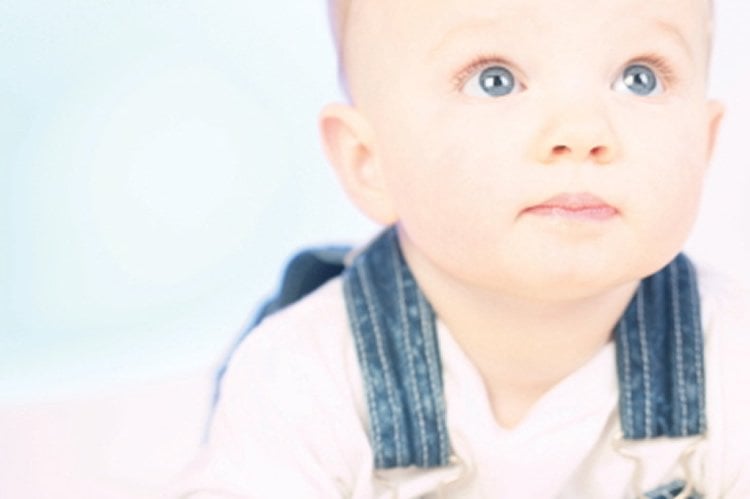Researchers have found evidence that genetic factors may contribute to the development of language during infancy.
Scientists from the Medical Research Council (MRC) Integrative Epidemiology Unit at the University of Bristol worked with colleagues around the world to discover a significant link between genetic changes near the ROBO2 gene and the number of words spoken by children in the early stages of language development.
Children produce words at about 10 to 15 months of age and our range of vocabulary expands as we grow – from around 50 words at 15 to 18 months, 200 words at 18 to 30 months, 14,000 words at six-years-old and then over 50,000 words by the time we leave secondary school.
The researchers found the genetic link during the ages of 15 to 18 months when toddlers typically communicate with single words only before their linguistic skills advance to two-word combinations and more complex grammatical structures.
The results, published in Nature Communications today [16 Sept], shed further light on a specific genetic region on chromosome 3, which has been previously implicated in dyslexia and speech-related disorders.
The ROBO2 gene contains the instructions for making the ROBO2 protein. This protein directs chemicals in brain cells and other neuronal cell formations that may help infants to develop language but also to produce sounds.

The ROBO2 protein also closely interacts with other ROBO proteins that have previously been linked to problems with reading and the storage of speech sounds.
Dr Beate St Pourcain, who jointly led the research with Professor Davey Smith at the MRC Integrative Epidemiology Unit, said: “This research helps us to better understand the genetic factors which may be involved in the early language development in healthy children, particularly at a time when children speak with single words only, and strengthens the link between ROBO proteins and a variety of linguistic skills in humans.”
Dr Claire Haworth, one of the lead authors, based at the University of Warwick, commented: “In this study we found that results using DNA confirm those we get from twin studies about the importance of genetic influences for language development. This is good news as it means that current DNA-based investigations can be used to detect most of the genetic factors that contribute to these early language skills.”
The study was carried out by an international team of scientists from the EArly Genetics and Lifecourse Epidemiology Consortium (EAGLE) and involved data from over 10,000 children.
The study used data from five samples – the Bristol-based Avon Longitudinal Study of Parents and Children (ALSPAC, University of Bristol, UK), the Generation R Study in Rotterdam (GenR, Erasmus MC-University Medical Centre, The Netherlands), the Northern Finland Birth Cohort 1966 (NFBC1966, University of Oulu, Finland), the Raine study (Telethon Kids Institute, Perth, Australia) and the UK-wide Twins Early Development Study (TEDS, King’s College London, UK).
Contact: Davey Smith – University of Bristol
Source: University of Bristol press release
Image Source: The image is adapted from the University of Bristol press release
Original Research: Full open access research for “A rare variant in APOC3 is associated with plasma triglyceride and VLDL levels in Europeans” by Beate St Pourcain, Rolieke A.M. Cents, Andrew J.O. Whitehouse, Claire M.A. Haworth, Oliver S.P. Davis, Paul F. O’Reilly, Susan Roulstone, Yvonne Wren, Qi W. Ang, Fleur P. Velders, David M. Evans, John P. Kemp, Nicole M. Warrington, Laura Miller, Nicholas J. Timpson, Susan M. Ring, Frank C. Verhulst, Albert Hofman, Fernando Rivadeneira, Emma L. Meaburn, Thomas S. Price, Philip S. Dale, Demetris Pillas, Anneli Yliherva, Alina Rodriguez, Jean Golding, Vincent W.V. Jaddoe, Marjo-Riitta Jarvelin, Robert Plomin, Craig E. Pennell, Henning Tiemeier, and George Davey Smith in Nature Communications. Published online September 16 2014 doi:10.1038/ncomms5831
Common variation near ROBO2 is associated with expressive vocabulary in infancy
Twin studies suggest that expressive vocabulary at ~24 months is modestly heritable. However, the genes influencing this early linguistic phenotype are unknown. Here we conduct a genome-wide screen and follow-up study of expressive vocabulary in toddlers of European descent from up to four studies of the EArly Genetics and Lifecourse Epidemiology consortium, analysing an early (15–18 months, ‘one-word stage’, NTotal=8,889) and a later (24–30 months, ‘two-word stage’, NTotal=10,819) phase of language acquisition. For the early phase, one single-nucleotide polymorphism (rs7642482) at 3p12.3 near ROBO2, encoding a conserved axon-binding receptor, reaches the genome-wide significance level (P=1.3 × 10−8) in the combined sample. This association links language-related common genetic variation in the general population to a potential autism susceptibility locus and a linkage region for dyslexia, speech-sound disorder and reading. The contribution of common genetic influences is, although modest, supported by genome-wide complex trait analysis (meta-GCTA h215–18-months=0.13, meta-GCTA h224–30-months=0.14) and in concordance with additional twin analysis (5,733 pairs of European descent, h224-months=0.20).
“A rare variant in APOC3 is associated with plasma triglyceride and VLDL levels in Europeans” by Beate St Pourcain, Rolieke A.M. Cents, Andrew J.O. Whitehouse, Claire M.A. Haworth, Oliver S.P. Davis, Paul F. O’Reilly, Susan Roulstone, Yvonne Wren, Qi W. Ang, Fleur P. Velders, David M. Evans, John P. Kemp, Nicole M. Warrington, Laura Miller, Nicholas J. Timpson, Susan M. Ring, Frank C. Verhulst, Albert Hofman, Fernando Rivadeneira, Emma L. Meaburn, Thomas S. Price, Philip S. Dale, Demetris Pillas, Anneli Yliherva, Alina Rodriguez, Jean Golding, Vincent W.V. Jaddoe, Marjo-Riitta Jarvelin, Robert Plomin, Craig E. Pennell, Henning Tiemeier, and George Davey Smith in Nature Communications, September 16 2014 doi:10.1038/ncomms5831.






